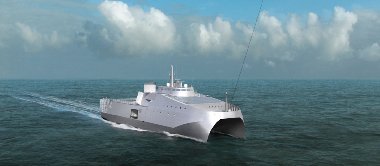Owusu-Mensah, Martin (2016) Formation of Nano-precipitates in FeCr alloy by Ion Implantation Stage long, ENSTA.
Fichier(s) associé(s) à ce document :
| PDF 2656Kb |
Résumé
Development of materials for future generation IV advanced fission and fusion reactors have led to the idea of the conception of oxide dispersed strengthened (ODS) steels. These steels have been reinforced with a dispersion of metallic oxides nanoparticles which enables to improve the creep resistance and radiation resistance to withstand the extreme conditions which are expected to be associated with these technologies. Contrary to conventional fabrication routes such as powder metallurgy used in industrial manufacture, ion implantation has been utilised in this study for the production of these ODS steels. With significant advantages of this ion implantation process which help to control the parameters associated, this research project also aims to understand the mechanisms of the formation of these quite complex nanoparticles. Ti and O were chosen as the elements to be implanted in a high purity Fe10%Cr ferritic alloy at energies of 100 and 37 keV respectively in order to have maximum deposited ions at a range of 40-50 nm depth. Microstructural characterisation was then performed by conventional Transmission Electron Microscopy (TEM) techniques as well as related analytical methods such Energy Dispersive X-ray Spectroscopy (EDX), Electron Energy-Loss Spectroscopy (EELS) and Energy Filtered TEM (EFTEM) to determine the analytical composition. Initial characterisation was performed on the as-received specimen by verifying the crystal structure and this indeed matched with the known body centred cubic (bcc) crystallographic structure with an average lattice parameter of 0.2865 nm quite close to the theoretical value of 0.2867 nm for FeCr. Further, Ti and O ion implantations were performed at room temperature into FeCr thin foils and characterisation of the implanted specimen showed there were no significant changes in the crystalline phase (as seen on the diffraction pattern), but large amount of dislocations and defects created in our alloy matrix. Also EDX Spectroscopy revealed the presence of Ti and O elements in the matrix but the evidence of nanoparticle formation not visible. In situ TEM thermal annealing was then performed at a temperature of 500 o C for 2 hours on the (Ti,O) implanted specimen to help nucleate and/or grow any nanoparticles within the alloy if indeed they existed. Additional spots were noticed in the diffraction pattern taken after annealing. Imaging with bright field (BF) and dark field (DF) modes revealed the appearance of nanoparticles in the spots of interest. These nanoparticles also appear larger at grain boundaries. EELS revealed a suspicion of an oxide layer on the surface. Finally, chemical characterisation by the use of EFTEM was performed using both the jump ratio method and the three-window method. The jump-ratio method indicated that there was depletion of Fe at certain spots with the enrichment of Cr and these spots seem to coincide. The three-window method also indicated coincidental spots which were enriched in Ti, O and Cr therefore, Cr oxide or an oxide of Cr and Ti suspected. Detailed diffraction analysis suggested a formation of either Fe 3 O 4 or FeCr 2 O 4 in the specimen. High Resolution TEM is requested further to fully resolve what indeed is the nano-particle oxide formed.
| Type de document: | Rapport ou mémoire (Stage long) |
|---|---|
| Sujets: | Science des matériaux, mécanique, génie mécanique |
| Code ID : | 6756 |
| Déposé par : | Martin Owusu-Mensah |
| Déposé le : | 06 sept. 2016 16:09 |
| Dernière modification: | 06 sept. 2016 16:09 |








